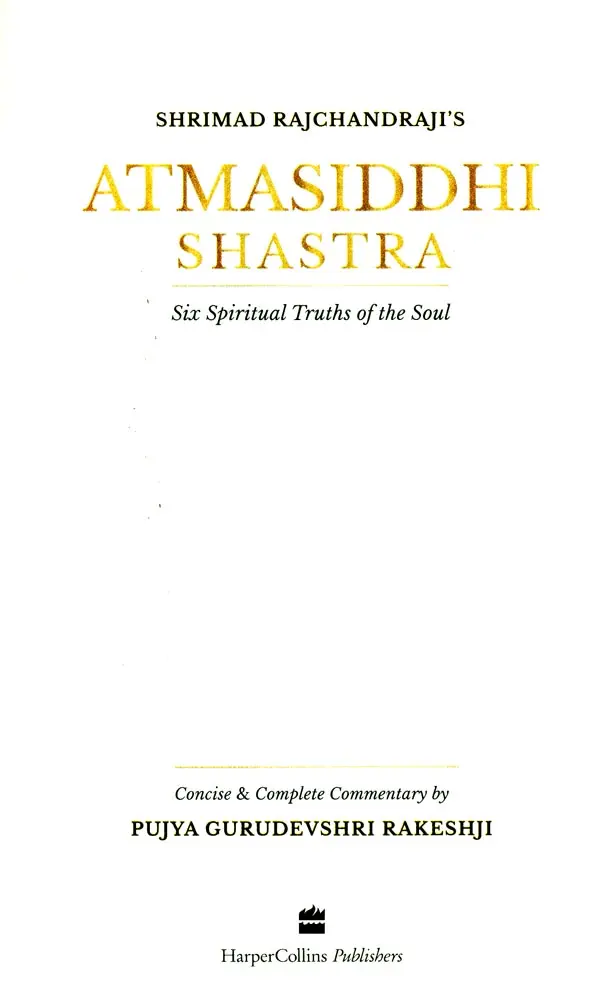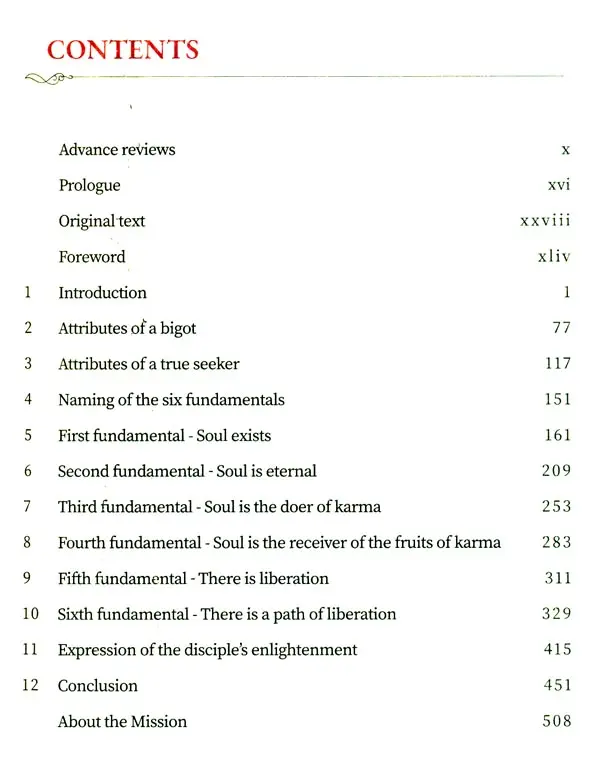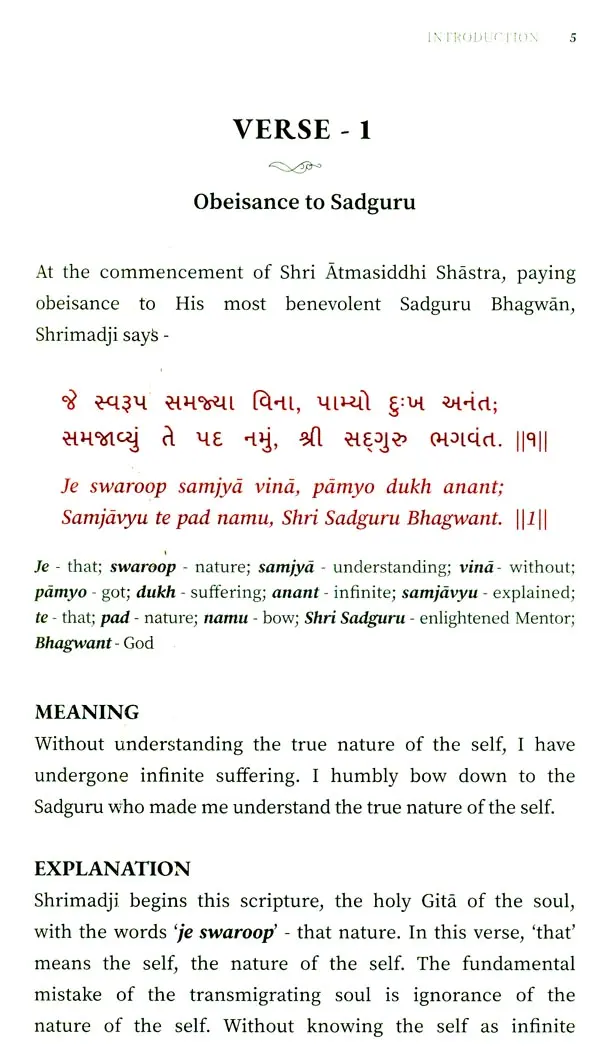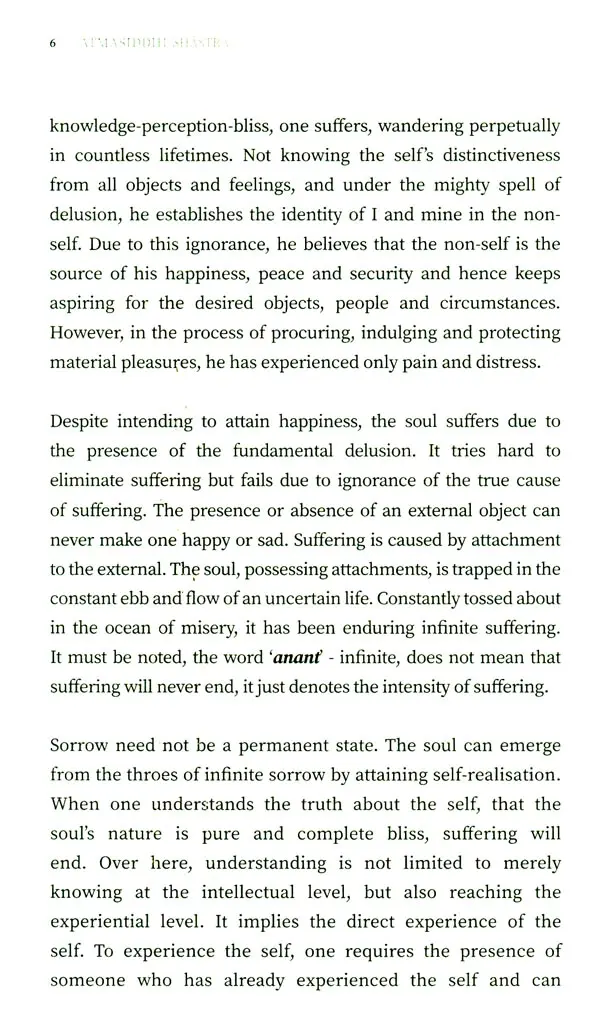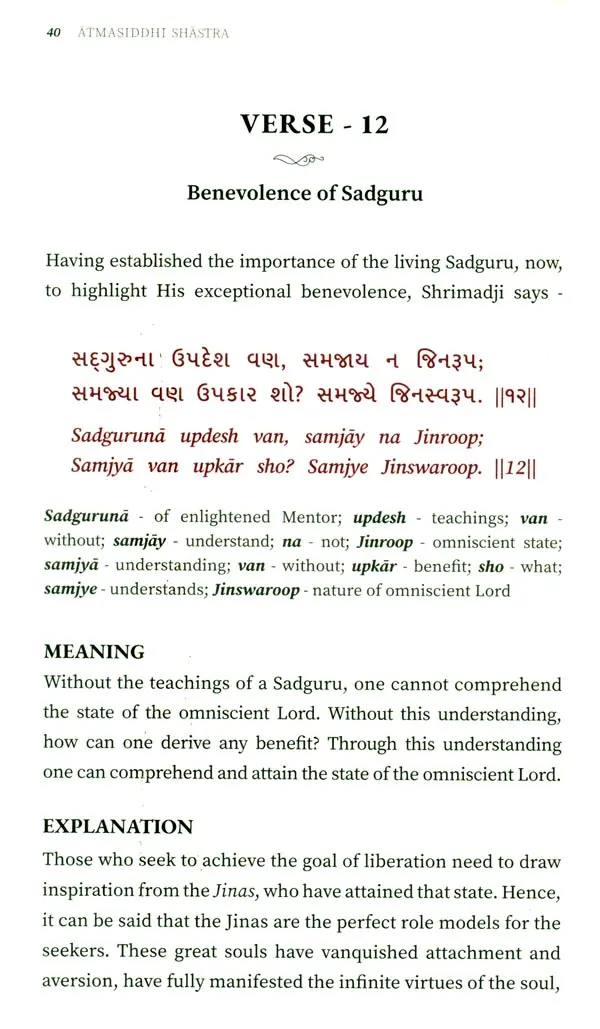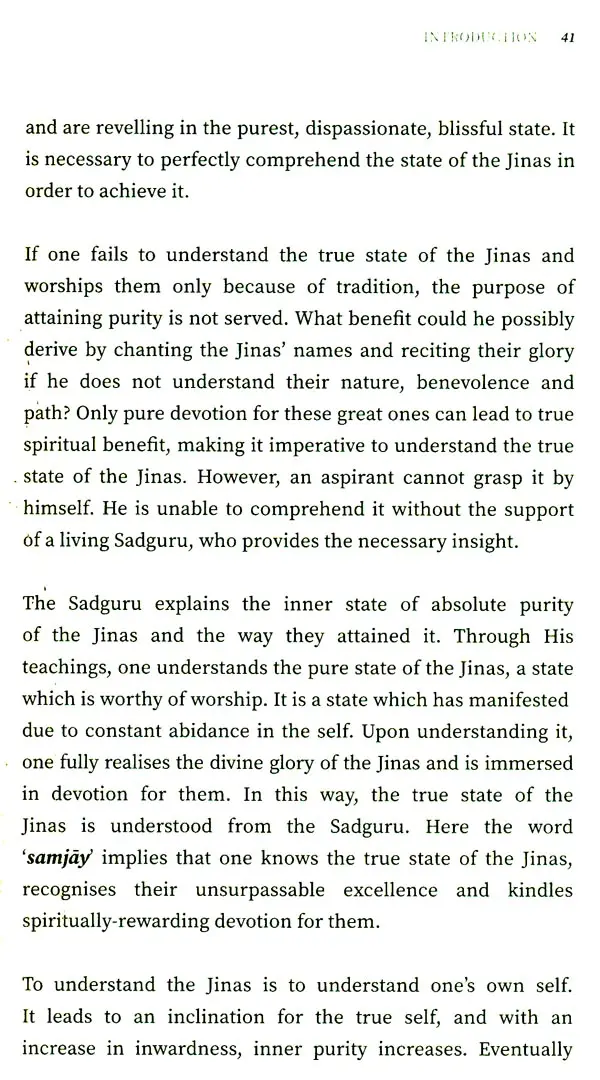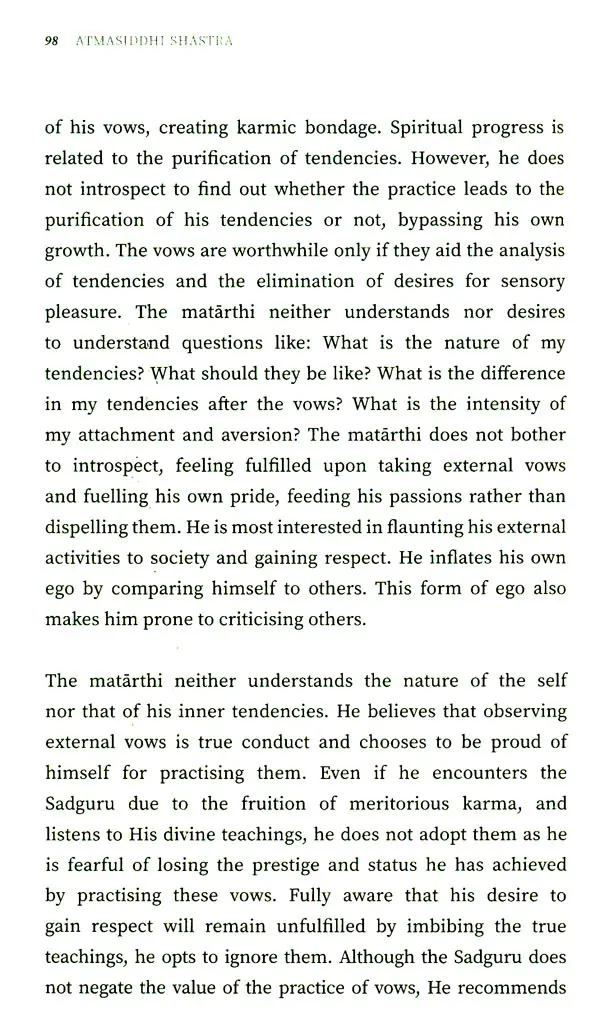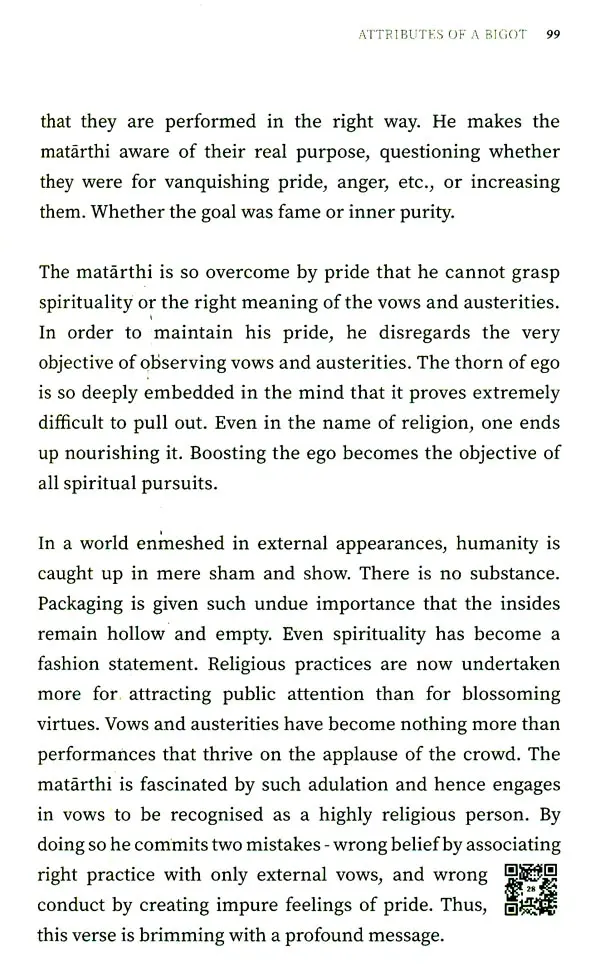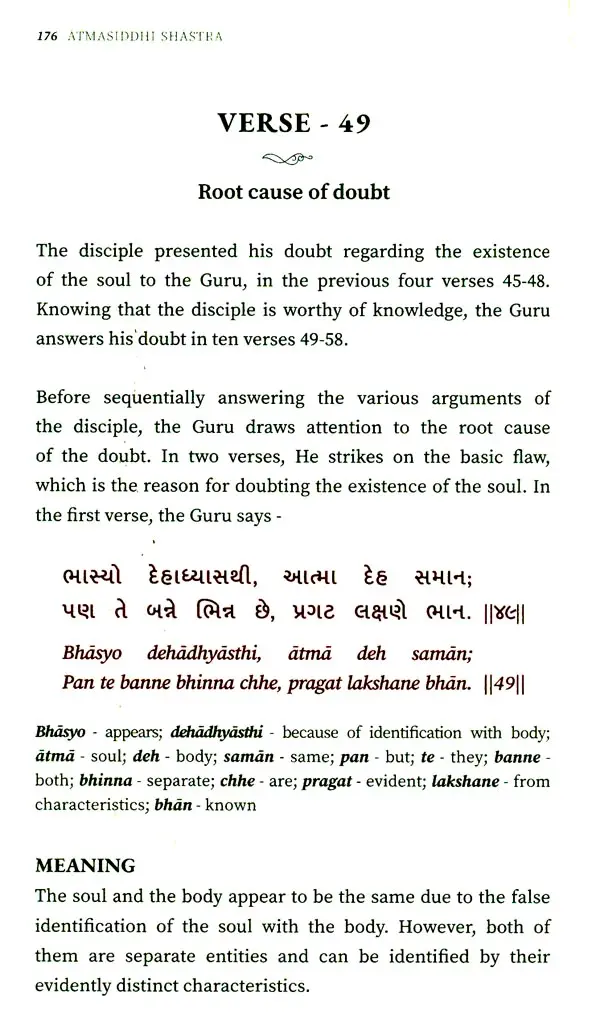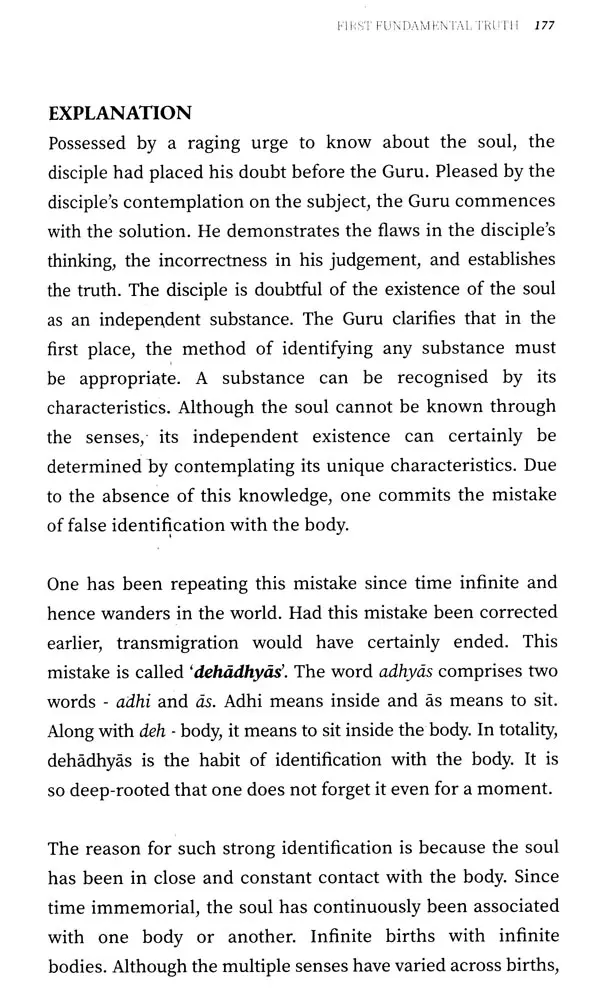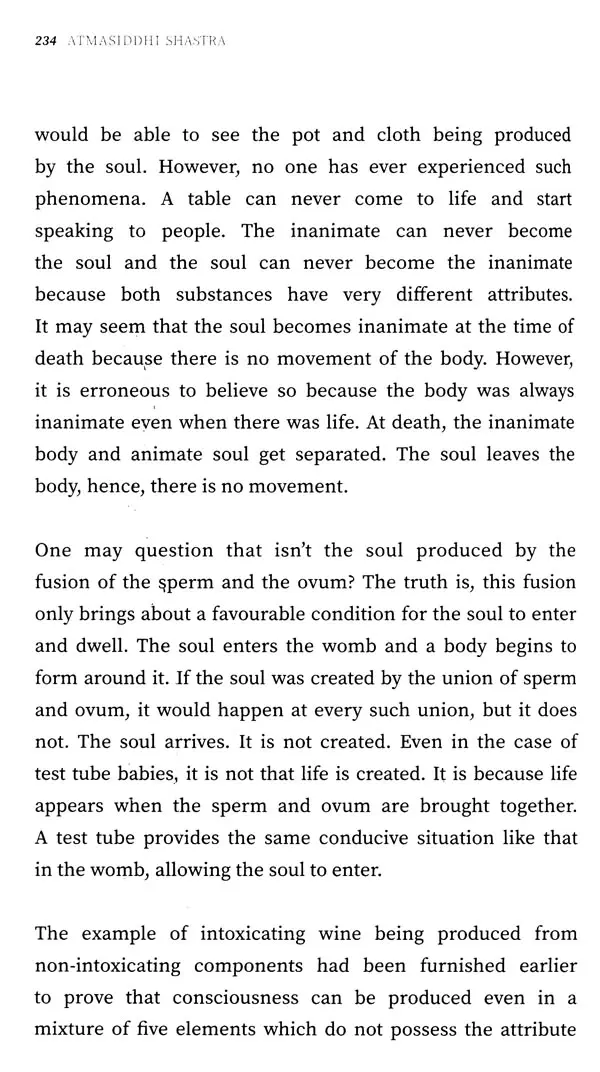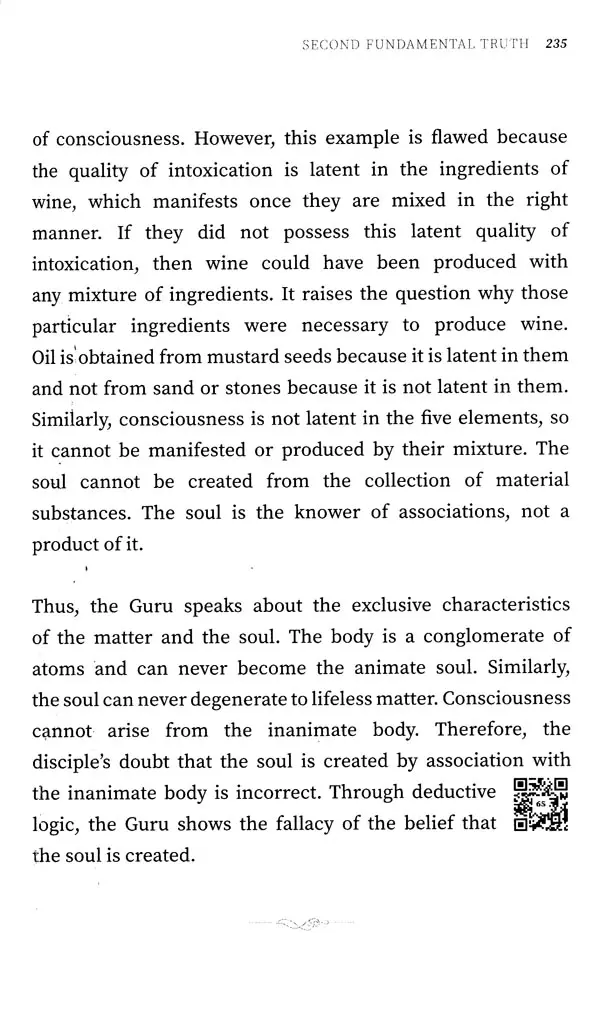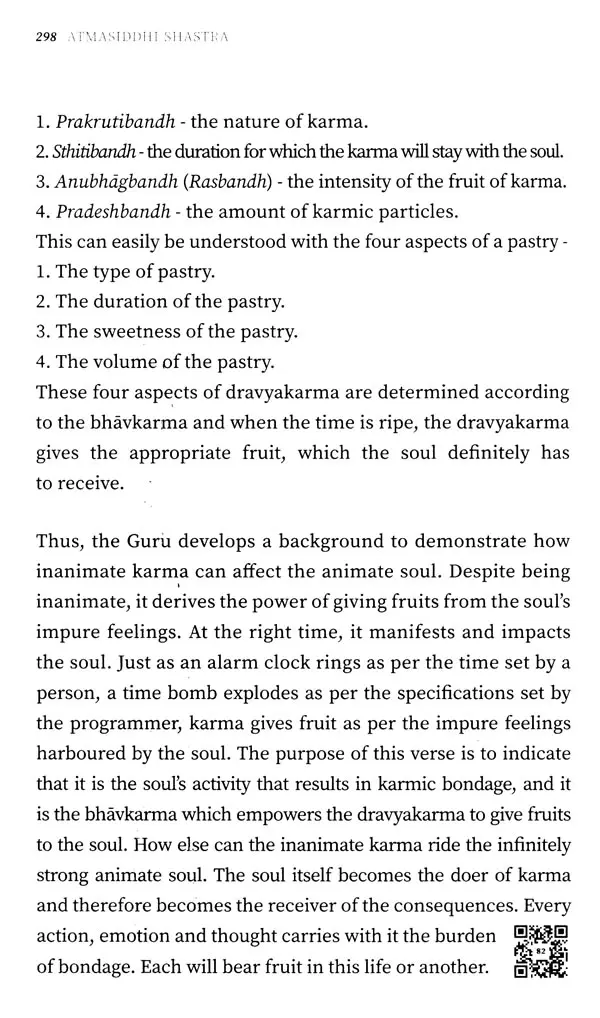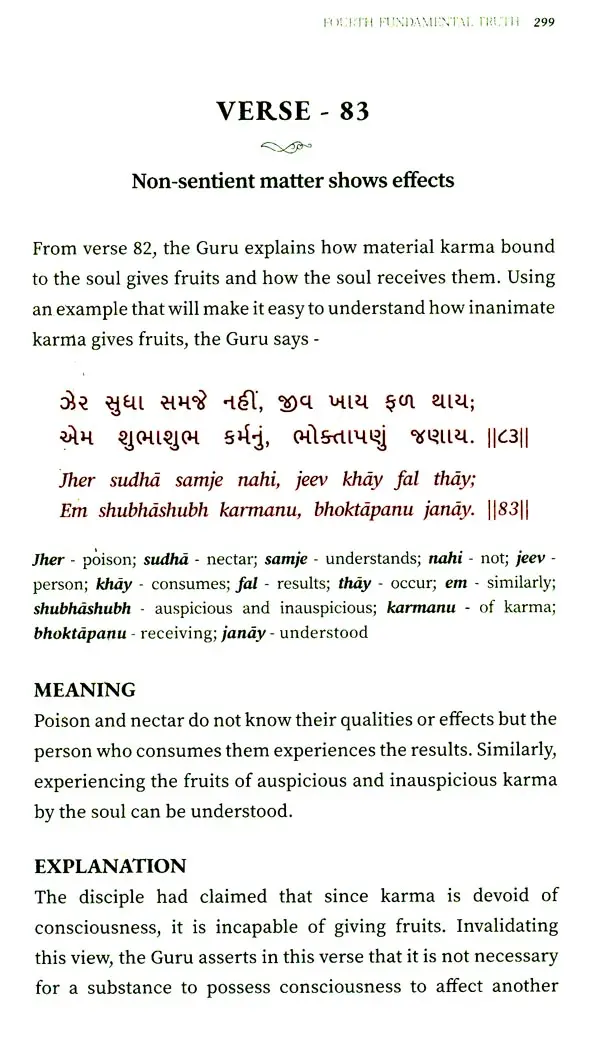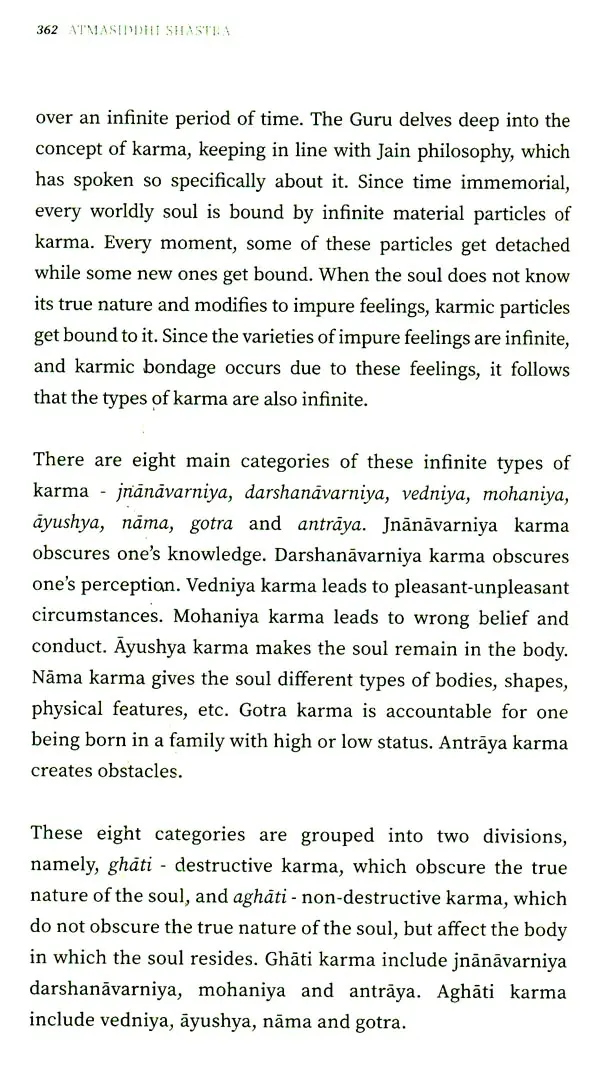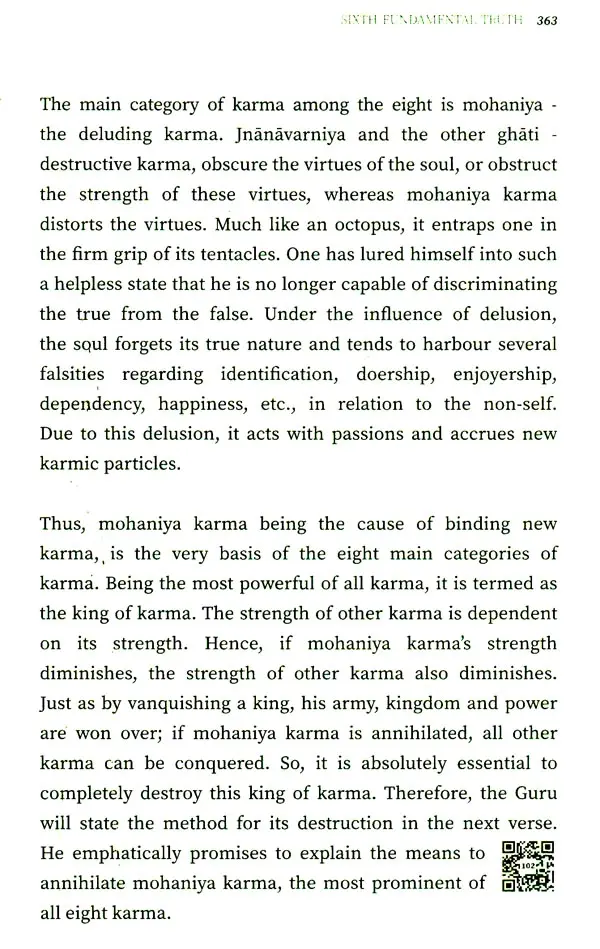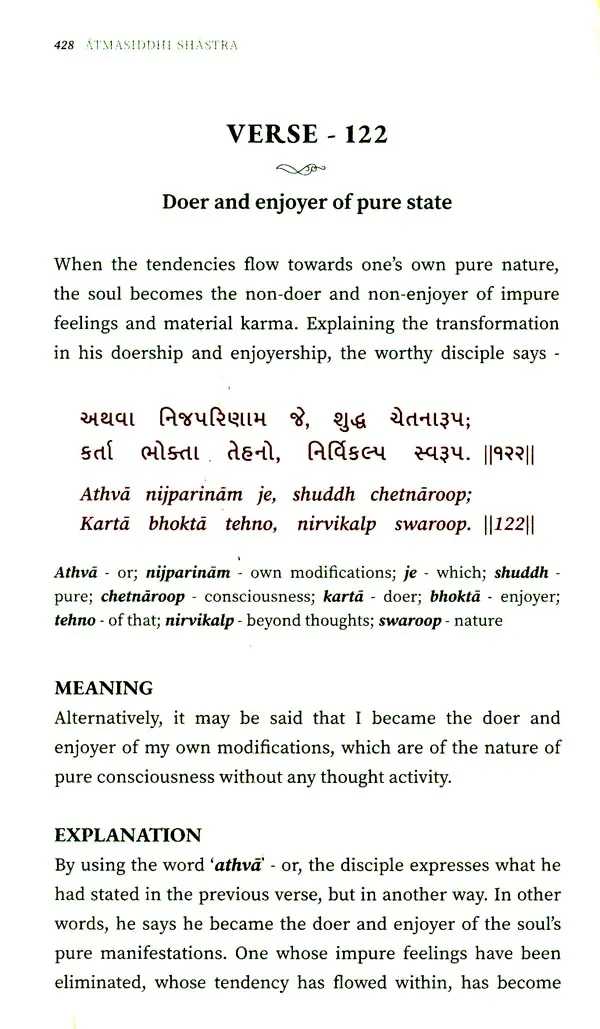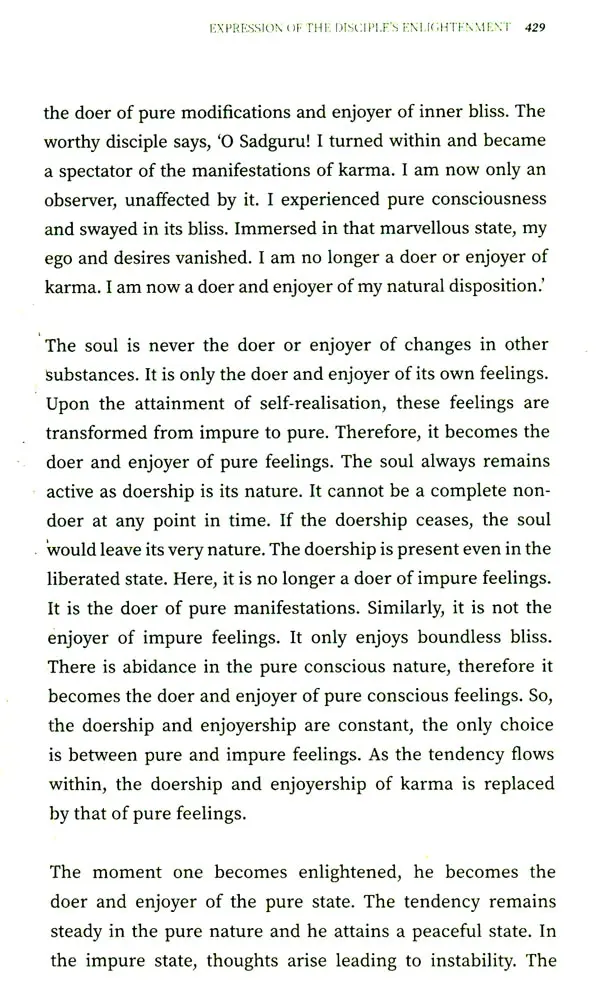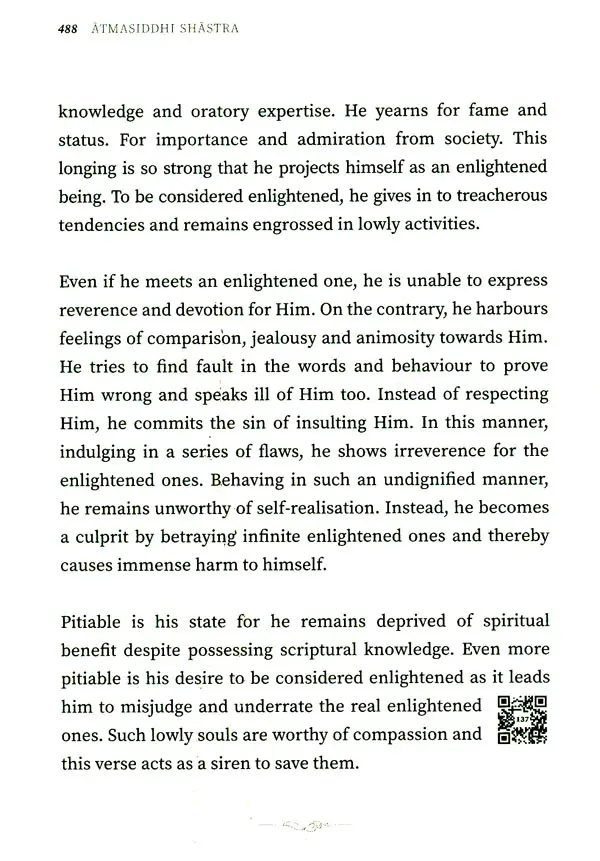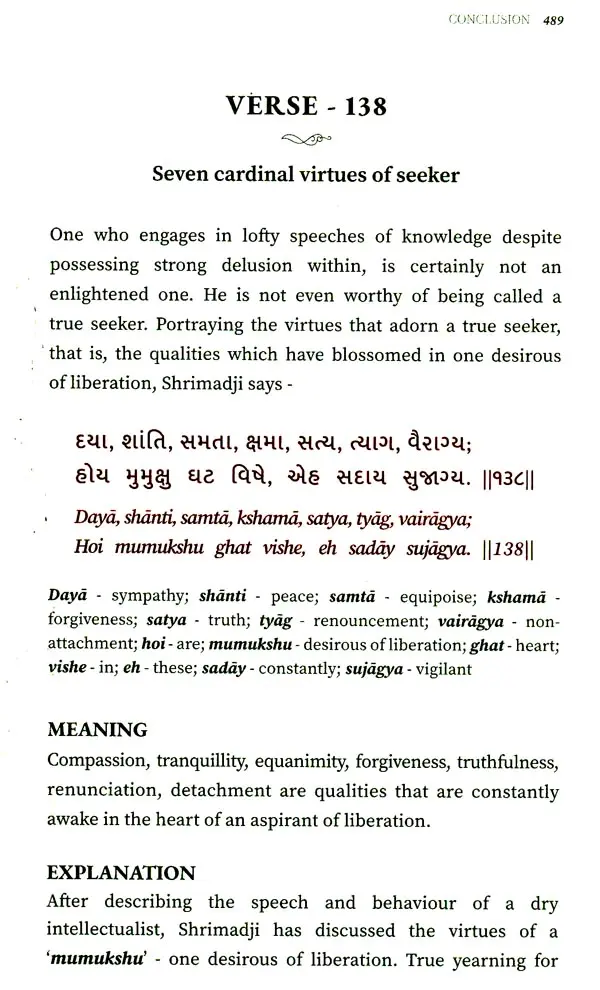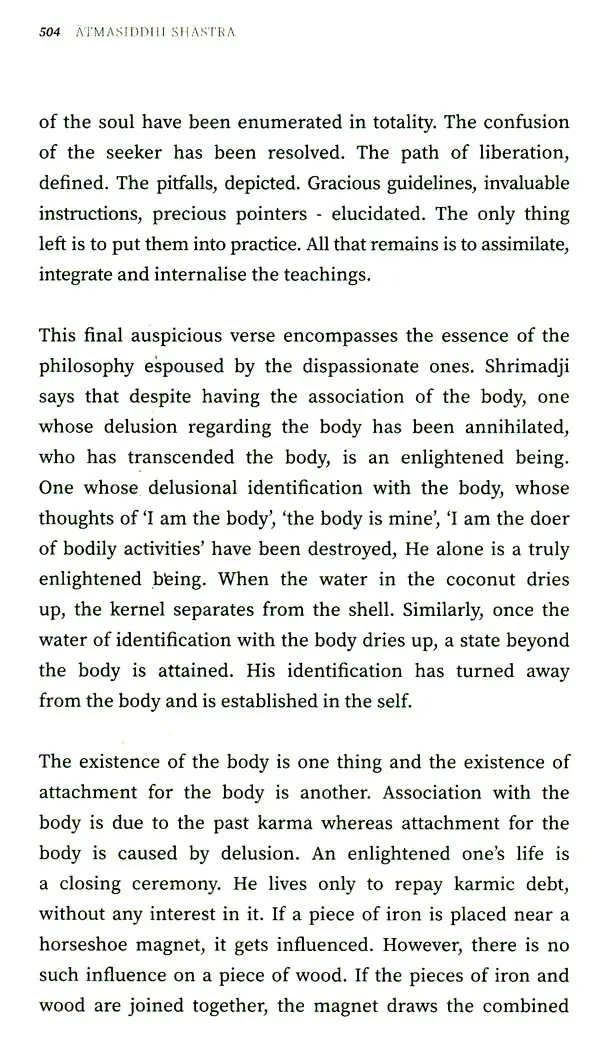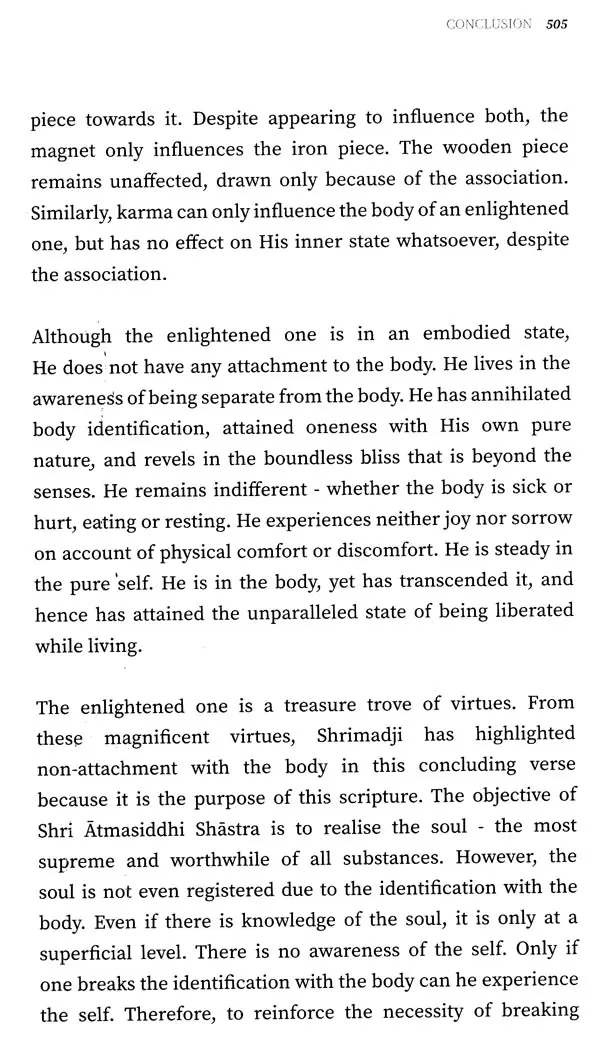
Shrimad Rajachandraji's Atmasiddhi Shastra- Six Spiritual Truths of the Soul
Book Specification
| Item Code: | UAF030 |
| Author: | Pujya Gurudevshri Rakeshji |
| Publisher: | Harper Collins Publishers |
| Language: | Gujarati Text With Transliteration and English Translation |
| Edition: | 2021 |
| ISBN: | 9789354894039 |
| Pages: | 562 |
| Cover: | HARDCOVER |
| Other Details | 9.00 X 6.00 inch |
| Weight | 550 gm |
Book Description
In the late 19th century, over 150 years ago, a supreme devotee of the dispassionate Lords, a divine seer, and a self-realized saint, scaled extraordinary spiritual heights and demystified the path to self-discovery - Shrimad Rajchandraji, fondly known and Param Krupalu Dev. An upholder and uplifter of Lord Mahavir's universal path, Shrimadji dispelled the prevalent darkness of delusion, and rediscovered the deepest mysteries of human existence.
Shrimadji was a revolutionary visionary who laid the foundations of spirituality for a new era, an enlightened alchemist who lived in the supreme state of soul consciousness, and a lyrical prodigy who inked the path of liberation in His powerful writings. In a short span of 33 years, He paved the passage to complete purity, and bequeathed the world an invaluable inheritance for the future.
The crown jewel of His philosophical literature, His magnum opus, is the 142-verse poetic masterpiece - Shri Atmasiddhi Shastra. Composed by Shrimadji in a single sitting of about one and a half hours, when He was merely 28 years old, the treatise is a staggering accomplishment, an encyclopedia of spiritual knowledge, the nucleus of all sacred scriptures, and the heart of the inner path. A blend of doctrine and devotion, logic and love, spiritual science and the art of self-realization, deep insights have been skillfully woven. As the composition evolves, it~ expression and exposition become piercingly profound, and yet are elucidated in simple, sublime language.
Shrimadji flows sequentially, like a stream unsullied, effortlessly penetrating the reader within.
Marking the 125th year of this monumental epic, we invited the world to rekindle the blazing flame of spirituality. Ardent devotee of Srimadji, enlightened Master, acclaimed author, and founder of Shrimad Rajchandra Mission Dharampur - Pujya Gurudevshri Rakeshji, expounded on Shri Atmasiddhi Shastra through a nine-month journey of illuminating discourses in English. Pujya Gurudevshri has brought a unique potency and universal appeal to the text by authoring a concise and complete commentary in English. Stemming from His experience of the self, and having plumbed the depths of this quintessential scripture, Pujya Gurudevshri's infinite devotion to Shrimadji and His ceaseless compassion have manifested in the form of this book, in the palm of our hands.
This elixir of life is a humble and selfless offering by Pujya Gurudevshri, a painstaking labor of love to spread the treasure of Shrimadji's teachings. But this journey had begun 23 years ago, when He was conferred the PhD degree for His extensive Ccomprising the fundamental truths, completely focused on the soul, Shri Atmasiddhi Shastra is an invaluable jewel of spiritual literature. The remarkable and distinctive style in which Shrimadji has composed this scripture is truly a wonder.
Each word resounds with spiritual experience and is inundated with heartfelt feelings. Each verse iterates the significance of the soul, leading the seeker towards self-realization.
Shri Atmasiddhi, Shastra comprises twelve sections which encompass 142 verses. In the beginning, Shrimadji lays the foundation for ·the main subject, addressing several vital points before expounding the six fundamental truths. The first introductory section containing 23 verses can be divided into three parts. In .verses 1-8, commencing with the auspicious obeisance, Shrimadji compassionately portrays the fallacy of the deluded ones who have strayed from the path of liberation.
Verses 9-14 assert the immense importance, glorious attributes and unparalleled benevolence of a Sad guru. Verses 15-23 advocate the absolute necessity of giving up self-willed behavior and treading the path of humility. This section serves as a. portal to the spiritual treasures embedded in Shri Atmasiddhi Shastra.
In the lineage of ancient Indian culture, a tradition prevails whereby an author pays obeisance at the beginning of the text. The subject, purpose and relation are also mentioned. Together, these four constitute the 'anubandh chatushtay'. It means four facts regarding a literary composition. They are as follows:
1. Mangal - It is a prayer at the beginning of the text, in which the author pays obeisance to his revered God or benevolent Sadguru to ensure unhindered completion of the auspicious work that he has commenced. The invocation of grace is of paramount importance. Mangal means that which gives happiness or that which causes the dissolution of sins.
2. Abhidhey Vishay - This indicates the subject matter addressed in the text. This if~ essentially stated at the beginning of the text, as no wise reader would want to read a composition without being interested in it. 3. Prayojan - This states the purpose of the text. The text is composed keeping in mind a specific goal to be achieved, and this purpose is indicated at the beginning of the text. 4. Sambandh - This elucidates the relationship. It is essential to express that the text is not conceived from one's intellectual fancy but is in line with the spiritual teachers of yore. By disclosing the relation, the reader develops faith and reverence for the text, and is able to determine its true value.
Following the ancient tradition of stating the anubandh chatushtay at 'the beginning, Shrimadji has woven the four topics with proficiency in the opening two verses of the scripture. In the first verse, He has expressed the mangal and the sambandh. In the second verse, He has specified the abhidhey vishay and the prayojan.
Book's Contents and Sample Pages
